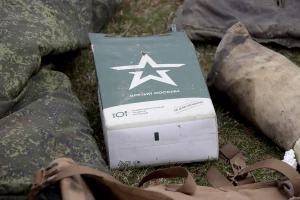
Why Mexican border is 'blocking' US military aid to Ukraine and whether situation with Texas will affect it
Recently, the US Senate announced that they are getting closer every day to approving funding for further assistance to Ukraine, which is tied to a total package of $106 billion, which also includes assistance to Israel, Taiwan, and the most controversial issue, US border security. However, for three months now, congressmen have been unable to vote for this package. What is the problem and where is the 'apple of discord' hidden?
Espreso will tell you what the vulnerability of the US-Mexico border is, how politicians are speculating on this topic, and why the US president decided to combine domestic and foreign issues into one aid package, thus making such important military aid for Ukraine a 'hostage'.
The article is about:
- How the US-Mexico border was formed and how long Texas has been an independent country;
- Problems of the US-Mexico border: who is responsible for it and why it is so "leaky";
- The Ukraine aid package is a border issue hostage: what is the difference in views between Democrats and Republicans?
- Will the Lone Star State's disobedience affect the decision on aid to Ukraine?
How the US-Mexico border was formed and how long Texas has been an independent country
The United States emerged as a result of a revolution caused by 13 British colonies that decided to create an independent state and throw off the king's rule from America. One of the reasons for the uprising was that the colonists had no representation in the British Parliament, but they had to pay taxes (even the tax on tea and, accordingly, the famous "Boston Tea Party") and obey other power restrictions. The War of Independence lasted from 1775 to 1783. After becoming the winner, the young state numbered about 4 million people, the United States began to deal with internal issues and remained neutral.
However, in the early 19th century, the Americans began an expansion policy, first seizing the lands of the Native Indians and gradually moving westward. Almost a quarter of the current US territory, which is 2.1 million km², was acquired through the bargain purchase of Louisiana from France for only $15 million ($300 million today). Inspired by their success, the Americans even wanted to seize Canada, which belonged to the British. However, they failed to do so. Moreover, the British reached the U.S. capital of Washington, and burned the city, but were later driven out of the country. Thus, the Americans realized that it was not advantageous to move north, so they focused their attention on the rich south.
The Mexican Republic officially came into being in 1824, defeating the Spanish who had ruled the land for several centuries. The formerly large Spanish province of Texas (a Spanish-Indian name meaning "friends" or "those who make friends") also became part of the newly created Mexican state. Due to the small population in this state, ironically, the Mexican authorities encouraged the immigration of settlers. They were mostly English-speaking settlers from both the United States and Great Britain.
Within 10 years, the majority of Texas became English-speaking. The United States made several attempts to acquire Texas, as it had done with French Louisiana. However, the Mexicans had other plans and refused to sell.
The new Mexican constitution, adopted in 1835, which increased the power of the central government and abolished slavery, added to the problems. Rebellions broke out in several states, including Texas. Government troops lost, and moreover, the president of Mexico was captured by the rebels and signed a treaty of independence for Texas. Although Mexico did not recognize the treaty, for the next 10 years Texas was an independent republic with its own president. However, in 1845, Texans agreed to become the 28th state of the United States.
The issue of the border between the United States and Mexico remained controversial. Moreover, the Mexicans did not agree to the loss of Texas. Therefore, in 1846, the Americans decided to establish a demarcation line favorable to them by force. As a result, U.S. troops occupied the Mexican capital and forced the Mexicans to cede not only Texas but also other territories. Thus, the Mexican state gave up almost half of its land to the United States. In 1853, the Americans bought more land from Mexico and established the final southern border, which is still in effect today.
Problems of the US-Mexico border: who is responsible for it and why it is so 'leaky'
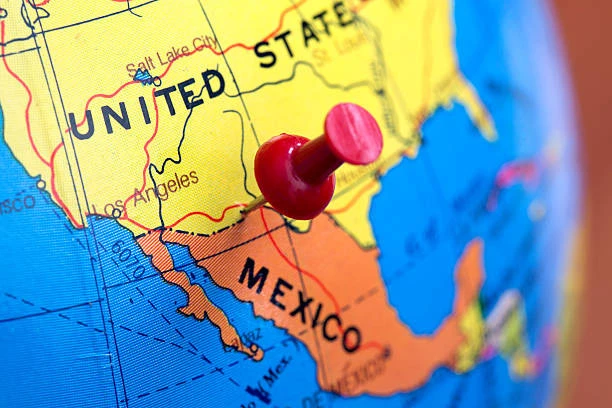
Photo: istockphoto
Despite the loss of a large territory, Mexico remains one of the largest countries in the world, covering almost 2 million km² and home to about 127 million people. In the 20th century, Mexico struggled for a long time with poverty and little power of the central government over its states. Nowadays, it is a rapidly developing country that shows economic growth, but has significant problems with drug cartels that can control even entire areas of the country due to corruption in the government. Mexico also still has a large gap between the rich and poor. According to the World Bank in 2020, more than 40% of Mexico's population lives below the poverty line, which is 50 million people!
Given that the US-Mexico border is over 3,100 kilometers long, it is not surprising that poor Mexicans try to enter a richer country, legally or illegally, and fulfill the dream of all immigrants - to get rich quick to change their lives and their families'. However, it is important to understand that many migrants crossing the Mexican border come not only from Mexico, but also from Central and South America, the Caribbean, Cuba, and Haiti. However, Mexico has become this buffer zone, a transit country through which all these migrants want to get to the United States. In general, Mexico has a fairly lenient visa policy with other countries, which allows migrants to travel through its territory toward the U.S. border. In addition, the Mexican government is not very interested in curbing emigration, as remittances from emigrants to their home country amount to billions of dollars, and emigration itself reduces the unemployment rate in the country.
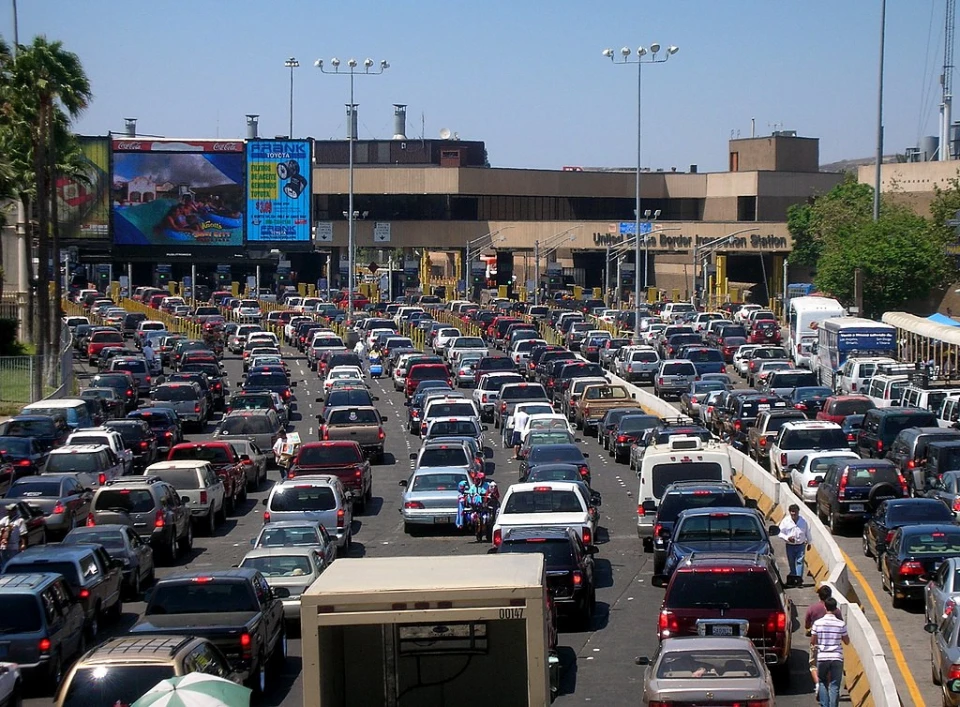
Photo: Wikipedia
Today, the border between Mexico and the United States is crossed perhaps the most times in the world. Legally, about 350 million crossings are made in both directions per year (data for 2010, including both tourists and locals who may live in Mexico and work in the United States). In addition, illegal traffic, according to CNN, has grown to 2-3 million people in recent years (in December 2023 alone, there were 225,000 migrants - the highest figure since 2000). This is the "apple of discord" that has been the topic of discussion among US politicians for many years about how to protect the country from illegal migrants from the south, who keep arriving daily (from several thousand to several tens of thousands) in four US states (mostly in Texas) bordering Mexico.
Until the early 20th century, the border between the United States and Mexico was hardly guarded because there was no need for it. The US Immigration Act of 1891 mandated the establishment of inspection stations (goods inspection) at entry points along the border with Mexico and Canada. And the US Immigration Act of 1917 put restrictions on Mexicans, who had to have a certain amount of money with them. The first lines of barriers between the two countries appeared only in the 10s and 20s of the last century. To a large extent, this was caused by World War I, because the German Empire wanted to draw Mexico into the war in its favor, so that it would attack the United States and recapture Texas, thus taking the Americans out of the game. So, just in case, the Americans began to build fortifications on the border. Federal soldiers were brought in to patrol the border and the construction of the first fences and barriers between the border towns began. The US Immigration Act of 1924 established the Border Patrol, which took over responsibility for the border.
Currently, the protection of the border between the United States and Mexico is the responsibility of the U.S. Customs and Border Protection (U.S. Customs and Border Protection is the largest federal law enforcement agency of the U.S. Department of Homeland Security) and the U.S. Department of Defense (border states may also use the National Guard to protect the border). There are 48 border crossing points.
An interesting fact is that the entire US Border Patrol has about 60,000 employees, of which only 21,000 are Border Patrol agents, who actually guard 3141 km of the US-Mexico border and 8891 km of the US-Canada border. That is, simple arithmetic says that under ideal conditions, when all 21,000 agents are on duty (which is doubtful because there are vacations and duties), one patrol agent is responsible for about 0.5 km of the border. Of course, this is not enough for high-quality border protection.
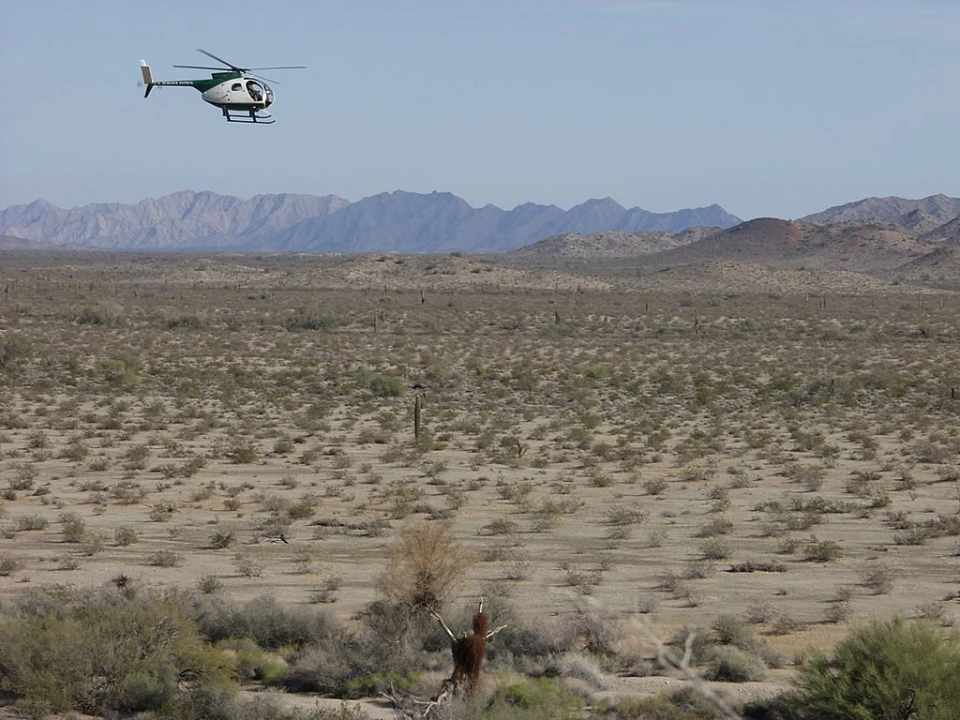
Photo: Wikipedia
Therefore, various technological means are used to maintain security: video surveillance, radar, and even satellites. In addition, drones have been actively patrolling the border for the past 10 years. But even more important is the issue of infrastructure construction: walls, fences, and other structures that dot the long border between the United States and Mexico. Journalists have called it The Great Wall of America, which is essentially a series of different-sized fences.
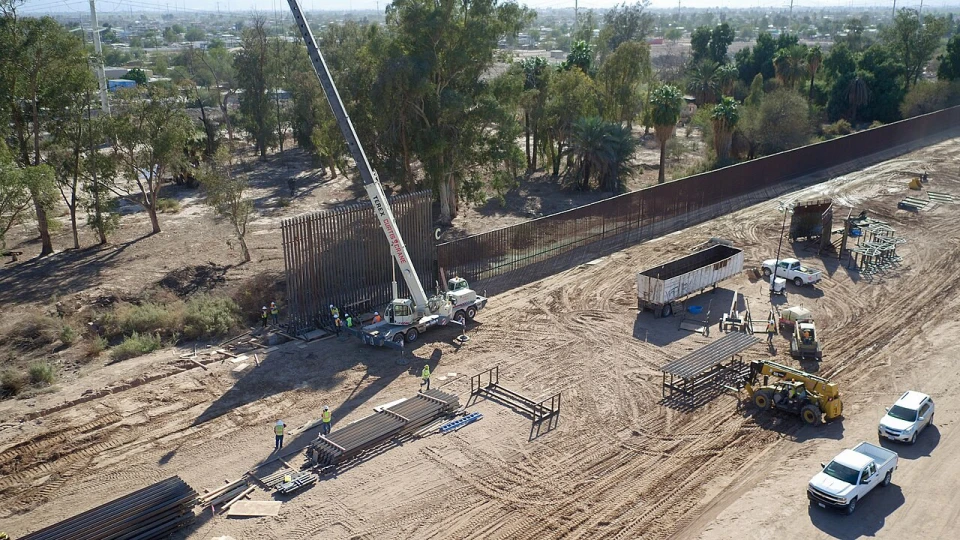
Photo: Wikipedia
This wall began to grow in the 1990s near San Diego, when a 23-kilometer-long iron fence was built. In 2006, when the situation with refugees deteriorated, the Bush administration decided to build another 1,126 kilometers of this "wall" to fence off the desert areas that are the busiest routes for illegal immigrants. Currently, the fence between the two countries covers almost half of the entire border. Therefore, many seekers of happiness try to cross the border in the Sonoran Desert, which is one of the hottest deserts: some succeed, but hundreds of people die there every year.
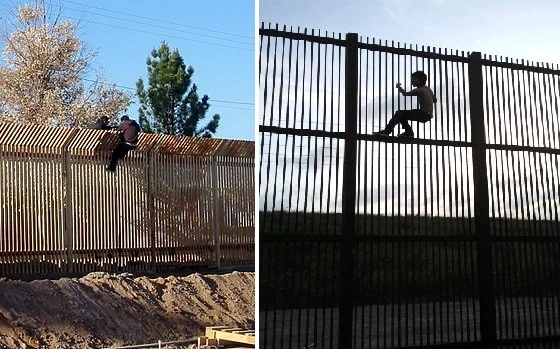
Photo: Wikipedia
Bloomberg estimates that by 2010, more than $3 billion had been spent on the construction of the 900 km wall. However, this was only the money for the wall and its installation, and billions more had to be spent on establishing a video surveillance system.
Importantly, the wall was never completed under either the Bush or Obama presidencies. Therefore, the construction of a wall on the border with Mexico became one of Donald Trump's main election promises. This idea was and still is actively supported by Republicans. This has led to heated debates between the Trump administration and Democratic congressmen, causing the federal government to paralyze. Therefore, President Trump did not realize the idea of the wall, he was able to complete only 76 km of the fence, although he renewed and reinforced more than 600 km of the existing one. When Democrat Joe Biden came to power in 2021, the construction of the wall was immediately suspended (his election promise). But in October 2023, the president was forced to partially resume construction of the wall on the border with Mexico.
The wall project was 'unfrozen' for a reason, because political games began in the United States before the new presidential election, and Biden wanted to sway Republicans in his favor in the issue of allocating money to Ukraine, Israel, and Taiwan through concessions on the border issue. Biden believed that this would force Republicans to quickly support the bill. However, it didn't work out the way the president intended.
Ukraine aid package - a hostage to the border issue: what is the difference in views between Democrats and Republicans
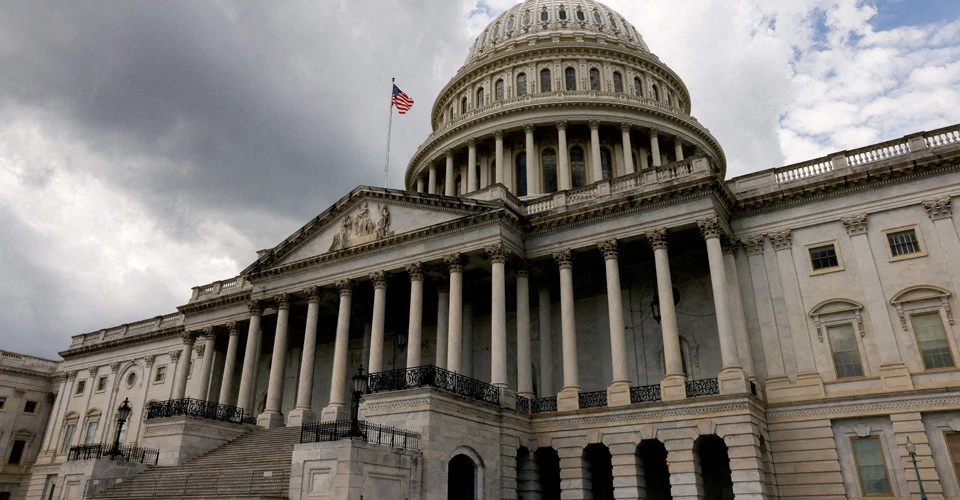
Photo: reuters
On October 20, 2023, U.S. President Joe Biden submitted to Congress a previously announced request for more than a hundred billion dollars in defense aid, including $61 billion for Ukraine, $14 billion for Israel, about $8 billion for the Indo-Pacific region (mostly Taiwan to counter China's encroachment), and about $15 billion to strengthen the border with Mexico.
In 2022, the first year of Russia's full-scale war against Ukraine, when Biden submitted similar requests for aid to Ukraine to Congress, congressmen in both houses quickly approved the president's proposals. However, at the end of 2022, the balance of power in Congress changed. In November, elections to the U.S. Senate were held, which resulted in the Democrats losing to the Republicans in the lower house of Congress, winning 213 seats against 222, respectively, although in the upper house, the Democrats won a majority for the first time since 2016 - 51 against 49. However, before the law comes into force in the United States, it must be supported by both houses of Congress.
In the House of Representatives, after the Republican victory, the work began to stall. Even the speaker was elected after 15 rounds of voting, which was a record in US history. However, he did not stay in office for long, and the current Republican Speaker Mike Johnson has repeatedly said that he supports the termination of American military assistance to Ukraine in the war with Russia, but when he became Speaker, his rhetoric changed to a "let's negotiate" position. Therefore, 2023 turned into a year of political bargaining between the Biden administration and the Republicans.
When the fiscal year that had been adopted in 2022 was coming to an end in the fall of 2023, did Joe Biden start looking for ways to sway Republicans to his side? After all, they were increasingly openly stating that they opposed the policies of the Democratic president. In addition, a new crack appeared in the Ukrainian issue due to the unsuccessful summer counteroffensive and corruption scandals in Ukraine, which even led to the loss of several Democrats' votes on this issue. After all, there were high hopes for the counteroffensive, and the higher the expectations, the greater the disappointment in case of failure. The United States believed that Ukrainians would be able to reach the Sea of Azov. But this did not happen for many different reasons.
Accordingly, the question arose as to whether it is necessary to continue to allocate tens of billions if the war is at a standstill. In addition, the situation with Israel also had an impact. Because among the congressmen there were those who began to condemn Israel's methods of siege and bombing of the Gaza Strip, which killed and still kills Palestinians.
Joe Biden, realizing that every decision related to congressional approval would have to be fought for, decided to go all-in by including all the controversial issues in one package. This way, he tied domestic and foreign issues to one vote, as aid to Ukraine, Israel, and Taiwan were in the same document as border security. The bet was that Biden was ready to make certain concessions to the Republicans on the border issue, but the White House did not take into account two things: first, the migrant issue has sharply divided the views of both parties for decades, and second, the strength of the Donald Trump factor was much greater than expected.

Photo: gettyimages
Rumors are circulating on the sidelines of the U.S. Congress that Donald Trump, currently the favorite in the presidential election, has instructed his Republican deputies to 'hold their horses' on this important vote for Ukraine. After all, Trump's advantage is his popularity due to his populist policies. And sociology shows that American society is less and less supportive of allocating money to Ukraine, so Trump, always on top of the wave, is trying to gain even more support from voters in the run-up to the election. In addition, the issue of migrants is one of Trump's slogans, "make America great again," which means America for Americans, so no concessions on migration issues and the border.
Of course, this does not mean that if Trump wins the upcoming election, the United States will stop helping Ukraine. After all, as Ukrainian Foreign Minister Dmytro Kuleba put it, it's an election period in the United States, so politicians tend to promise a lot, but once in power, they understand the real situation in the world. "Who sold Ukraine the first American weapon? President Trump - Javelin. Who launched the program of free transfer of the first naval vessels, Island and Mark-6 boats, to Ukraine? Trump. Who fought against Nord Stream 2 and imposed sanctions on the well-known but already forgotten Fortuna ship that laid this pipeline? It was Trump," Kuleba said in an interview earlier this year, making it clear that Trump is a person with whom one can cooperate.
But the main topic of discussion at the moment is not the upcoming elections, which are still behind the screen of the US political scene and are preparing to be held, but the current debate over the border with Mexico. This issue has become a real powder keg. But what is the significant difference in views between Democrats and Republicans?
In short, Democrats are more loyal to migrants, while Republicans are very categorical, seeing them as the main current threat to the stability and prosperity of the United States.
"The radical wing of the Republican Party in Congress does not support substantial assistance to Ukraine unless we take the most draconian actions to keep immigrants out of America, to build walls and so on," President Biden said in early December last year.

Photo: Reuters
Biden and the Democrats proposed to increase migrant enforcement personnel by 5,000, allocate additional funding for immigrant forced repatriation flights, maintain additional places in Immigration and Customs Enforcement facilities, and provide grants to local governments and nonprofits for shelter, food, and services for newly arrived migrants. In addition, the request included billions of dollars to equip crossing points with new technology to better detect drugs coming from Mexico to the United States.
But for Republicans, this is not enough; they are in favor of radical solutions to 'finally solve' the problem. Therefore, they proposed not just to strengthen the border, but to provide money for a complete change in border policy. The Republicans propose to continue the work of former President Donald Trump, i.e., to complete the construction of the wall with Mexico, to cut off funding for non-profit organizations that help migrants, to significantly increase the number of Border Guard patrols, and to limit the use of the 'humanitarian password,' i.e., the US residency permit that the Biden administration used to let citizens of Ukraine, Haiti, Cuba, Nicaragua, Afghanistan, and Venezuela live and work in the United States. Democratic Senator Chris Murff said that the Republican demands are unreasonable and they are "playing games with the security of the world" when they make their demands on the border in exchange for supporting funding for Ukraine, Israel and Taiwan.
Weeks after weeks have passed since October, when this issue was raised in Congress, and Republican congressmen continue to refuse to vote in favor. On December 6, 2023, the aid funding bill did not officially pass a procedural vote in the U.S. Senate.
At first, it was said on the sidelines that congressmen would be able to agree on this issue by the end of the year, but when it became clear that this would not happen, they postponed it to January. However, as of the end of January, neither side is optimistic that the overall military aid package will be agreed upon in the near future. Meanwhile, at the beginning of the year, the Pentagon ran out of money for new aid packages for Ukraine, and the Ukrainian Armed Forces are beginning to experience a shortage of shells at the front. In other words, Ukraine has become a hostage of political games in the United States.
"I'm ready to solve the problem, I really am - massive changes, and I mean it sincerely. II believe we need significant policy changes at the border, including changes in our asylum system," Biden said on January 20, hinting to Republicans that he was ready to make the broadest possible concessions on migration so that they would vote for this critical aid package, without which it will be very difficult for Ukrainians to fight Russian aggressors this year.
The Associated Press writes that the core group of negotiators has been working behind closed doors for almost two months on changes to US border and immigration policy. However, there are still many controversial issues that both parties cannot agree on. Therefore, the issue has not yet been put to a vote in order not to fail again.
"A bad border deal is far worse than no border deal," Trump wrote on Truth Social on January 27, thus giving an ultimatum that either it will be the way the Republicans want it or it will be nothing.
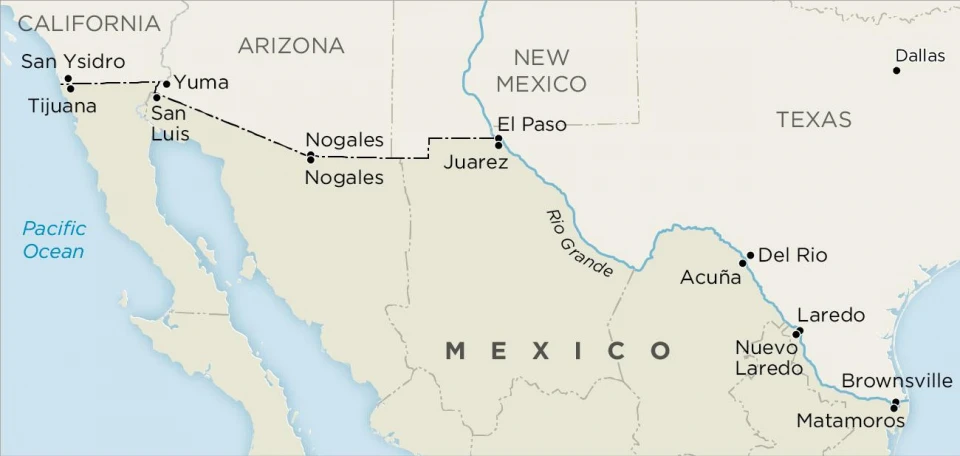
Photo: social medias
Instead, CNN notes that next week the Senate is expected to officially unveil the migration agreement that Democrats and Republicans have been negotiating for so long. And then it will be possible to vote for it and for the allocation of military aid to Ukraine. Biden called the agreement "tough but fair."
"It would give me, as President, a new emergency authority to shut down the border when it becomes overwhelmed. And if given that authority, I would use it the day I sign the bill into law," the US president said on Friday, January 26.
According to the agreement, which will soon be made public, the Department of Homeland Security will be granted new emergency powers to close the border if the average daily number of migrants reaches 4,000 for one week. This means that all other arriving migrants will be sent back to Mexico immediately. If the average daily number of migrants crossing the border exceeds 5,000 in a given week, the authorities will also be obliged to close the border to migrants who cross illegally, i.e., without entering the entry points. Some migrants will be allowed to stay if it turns out that they are fleeing torture or persecution in their home countries. Also, according to the proposal, any migrant who tries to cross the border twice when it is closed will be banned from entering the United States for one year.
However, given that the current figures are more than 10,000 illegal migrants a day, this means that once Biden signs the law, the border will be immediately closed to them.
Meanwhile, migrants continue to arrive in the United States. The state of Texas added fuel to the fire by deciding to solve the border problem on its own, which in turn led to speculation about a possible civil war. After all, the government of Texas began to show disobedience to the federal government, acting as it sees fit. However, in reality, this is not such an unusual pattern in the relationship between Texas and the central government.
Will the Lone Star State's disobedience affect the decision on aid to Ukraine?

Photo: kronbergsflagsandflagpoles.com
The first thing to understand is that the United States is a union of federations, meaning that power is divided between the central (federal) government and the individual states. Each state has its own constitution, government and laws, and even its own armed forces (each state has its own national guard), but at the same time it is subordinated to the federal government and the federal Constitution. However, sometimes there are disputes between these governments, so the role of the judiciary is important, as it sets the tone.
Texas has always been known for its independent view on many issues. This is explained both historically (it has already been mentioned that it was an independent state for 10 years) and economically. Indeed, Texas, which is larger than Ukraine and home to 30 million people, has one of the largest economies of any state in America. According to the latest figures, Texas' GDP exceeds $2.5 trillion (only California has more in the US). If Texas were a separate country, it could be among the top 10 economies in the world. The economy of Texas is diverse: from a large number of farms to modern computer firms, but Texas is best known for its oil resources, with a third of all US oil reserves concentrated in this state. No wonder that some Texans feel that this is a special state, which is tellingly nicknamed the Lone Star State.
"Let's compare, the economy of Texas is bigger than Canada's, bigger than Australia's. And just imagine, the economy of Texas is even bigger than the economy of Russia. That makes me more powerful than Putin! ", sarcastically said the governor of the US state of Texas, Greg Abbott, in 2018, thus hinting at this peculiarity of Texans who compare themselves not to other states, but to other countries.
Therefore, with about 2,000 kilometers of border with Mexico, Texas is the most affected by illegal migration among all American states. In 2021, Texas launched an independent operation to catch additional migrants, called the Lone Star Operation, with a budget of $10 billion. About 10 thousand National Guardsmen also began guarding the border with Mexico. During this time, nearly half a million migrants were detained (almost a hundred of whom died as a result of being chased by the National Guard, including in M113 armored personnel carriers).
Since December 2023, Texas Governor Greg Abbott has been promoting a bill to make illegal immigration a state crime, which would authorize Texas law enforcement to immediately arrest undocumented migrants anywhere in the state and state courts to immediately order their deportation.
The epicenter of the new political confrontation between Republican-controlled Texas and the Democratic Biden administration was the conflict in the Texas town of Eagle Pass. On January 11, 2023, the Texas National Guard took control of Shelby Park (only 19 hectares in size), located along the Rio Grande River, which separates the United States from Mexico. This happened after Texas Governor Greg Abbott signed an emergency declaration to shut down the park. Therefore, the Texas National Guard blocked US Border Patrol agents from patrolling the area, taking control of the border into their own hands with machine guns. Additional barriers were set up, which allegedly resulted in the deaths of the migrants: a mother and two children whose bodies were found in the river.
According to Voice of America, on January 22, the U.S. Supreme Court ruled that federal agents have the right to remove barbed wire and other barriers that Texas authorities had previously installed on the border along the Rio Grande River to prevent illegal migration at the Eagle Pass border. Therefore, the federal patrol demanded that the National Guard leave the park and give them access to comply with the court order. However, this did not happen. On January 24, the governor of Texas said he refused to allow federal authorities to enter the park, vowing to "protect the sovereignty of the state."
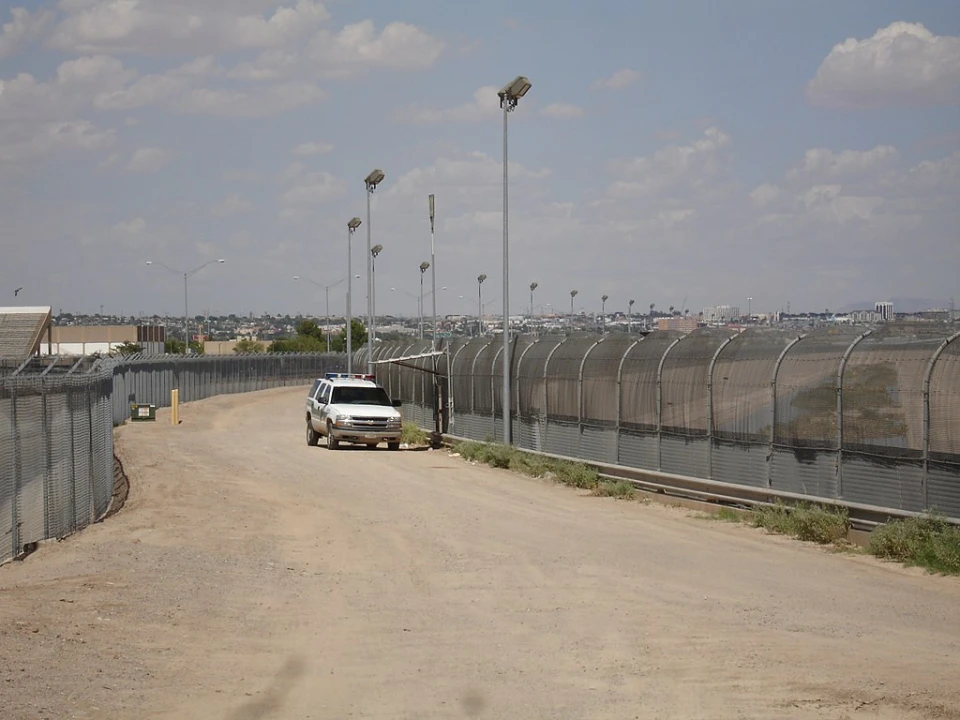
Photo: Wikipedia
American newspaper writers began to speculate that such a confrontation could mean "the beginning of a constitutional crisis." After all, 25 other Republican state governors announced their support for Texas, saying they were even ready to send their National Guard troops if necessary. Donald Trump has also joined the conflict, urging states to send National Guard troops to Texas.
On January 23, the Department of Homeland Security issued an ultimatum to give the Border Patrol full access to Shelby Park by January 26. However, nothing happened on January 26. Texas Democrats called on President Joe Biden to establish federal control over the Texas National Guard. Instead, Texas Governor Greg Abbott said he was ready for a potential conflict with the federal government over the border situation and accused Biden of "ignoring Texas' demand to fulfill its constitutional responsibilities." The White House has so far reacted rather cautiously, saying that the Texas governor's actions are "dangerous."
In other words, the US president has added another problem to the existing ones: how to calm down Texas? Probably the simplest answer will be given when Congress approves the long-suffering military aid, which will include a mechanism for shutting down the border. However, the more complicated answer involves the Donald Trump factor again. After all, the Republican governor of Texas may be playing along with the election race to show Americans that Biden cannot cope with domestic problems, so Trump must be returned to power.
Meanwhile, according to a report by the American Institute for the Study of War (ISW), the Russian government and propaganda machine are trying to manipulate domestic political events in the United States to increase instability in the country and prevent political debate on military assistance to Ukraine. So it is clear that the chaos in Texas plays into the hands of the Kremlin and not in favor of Ukraine. It creates additional problems for the approval by congressmen of the long-awaited multibillion-dollar military aid to Ukraine for this year.
- News









